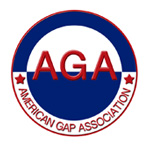MISSION, VISION & HISTORY
MISSION
"The mission of the American Gap Association is to advocate for accessibility to Gap Year education through the meaningful accreditation of safe and quality organizations, and the proliferation of Gap Year Scholarships."
The American Gap Association is primarily focused on increasing the notoriety of Gap Years and their benefit within the American educational system. While a Gap Year is not for everyone, we do believe that in principle, everyone can stand to learn and grow from taking one.
VISION
Our vision for Gap Years in the United States quite simply is that we feel that most Americans should be taking some conscious time away from academia before starting their college careers. Partially for the natural maturation process, but mostly to go out and experience the world a bit. Americans often are raised in a fairly insulated environment - English is the dominant language of travel and business, we have most everything we could wish for, and there's rarely a need to seek outside our own bubbles to get what we need. For instance, about 30% of Americans have passports, and of that 30%, about half will only ever use their credentials to travel to Canada or the resort towns of Mexico. While Gap Years are not exclusively international, the shared vision of building bridges to communities outside our own ought to be true for every American if we're to continue to play the active role we do in global issues.
HISTORY
The American Gap Association was founded in 2012 as a non-profit professional organization. We currently also have a 501.c.3 Foundation dedicated to scholarship development to the ends of greater accessibility to the benefits of a Gap Year. However, the reasons for the creation of a professional association came from a lack of clarity around what a Gap Year is and to whom they are best suited. In short, many people have considered a Gap Year simply as "taking time off," … and frankly the statistics are pretty unfavorable towards college graduation amongst students who simply "take time off." Gap Years, however, are far more structured than simply grabbing a part time job at your local yoga studio, grocery store, or Dairy Queen. While working can be an insightful and cost-cutting way to prepare for your Gap Year, it in and of itself is NOT considered a Gap Year.
Gap Years over the years have also garnered a mistaken impression that they're only for students who aren't "ready for college." And while many bonafide Gap Year students are indeed either burnt out of traditional academia or simply not clear about what their goals are from four years at university, the impression that a Gap Year is not a precursor to college is simply false: indeed, within one year of completed a Gap Year, 90% of students are actively enrolled in a four-year institution. The earning potential, educational benefits, and access to higher education's resources are very obviously in the benefit of any student who avails themselves of a higher education - and thus you'll find that almost every Gap Year educator is highly encouraging and supportive of students to benefit from their time away, but ultimately to find their way back to a university education.

